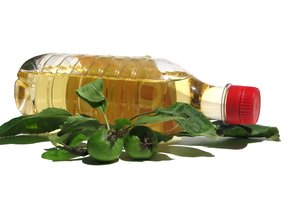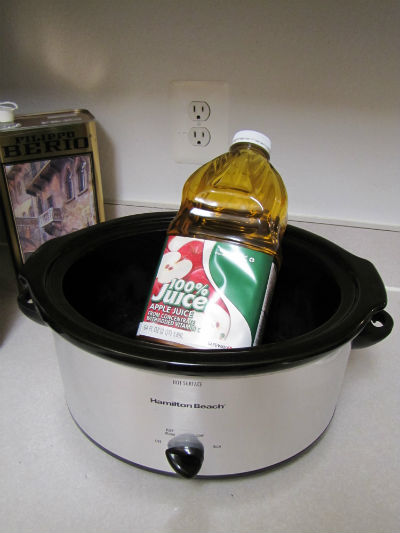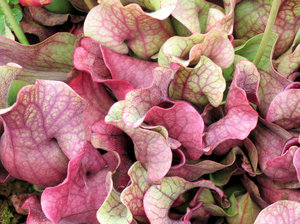
Life is just not very interesting without enzymes. We can neither make bread, brew beer, make vinegar or wine without enzymes. Further up on the list, exchanging carbon dioxide is not nearly as efficient without the enzyme carbonic anhydrase. “Although these reactions can occur even without the enzyme, carbonic anhydrase can increase the rate of these conversions up to a million fold” (Goodsell , 2012). In the body, enzymes have everything to do with critical functions as well as the important task of breaking down sugars. “Almost any acid, as well as a variety of enzymes from plants and animals, can perform the trick of breaking startch molecules down into syrup of mixes sugars” (Wolke, 2002). But what do they do for food before we eat it?
[They] are responsible for many good and bad changes in food. They’re what make an apple bruise, an artichoke blacken and a green bean turn from bright to dull, and make fat rancid. But enzymes are also why aging meat can make it more tender, are active in the fermentation process, and are often responsible for food aromas. (Ruhlman, 2007)
Okay, so enzymes do lots of useful things, but what are they? Animal, vegetable, mineral? Actually, they are (almost all) proteins (but could be RNA). [Click here for an audio explanation] Speaking in Chemistry terms, they are catalysts. That is to say that they accelerate a chemical reaction thousands of times or even as much as a million times (in the above cited example) over and over again without being used up.

When I think of enzymes, I think of disassembly. The enzyme is usually pretty specialized. An enzyme will have an active site that interacts with a particular substrate. In other words humans cannot eat grass because we lack the enzymes (with specific active sites) to digest it (work on the substrate of the grass). If you are trying to avoid this disassembly process, then you can employ certain countermeasures against enzymes, namely: heat, cold, acids or sulfur to name a few.
- Heat: If green beans are cooked quickly they will still have a bright green color, but if (over)cooked too slowly or for too long they will darken, the enzymes have been allowed to become vigorous and inevitably you will lose B Vitamins in the final product.
- Cold: If honey is kept cool (or warm) it will not crystallize. This is the process of the amylase and invertase enzymes acting to simplify the sugars and the result is that they fall out of solution. More fun with food, amylase is also the same enzyme that starts to break down long chain carbohydrates down into simple sugars as food enters your body.
- Acid: Phenolase (aka Polyphenol oxidase) is the enzyme that is responsible for turning cut or bruised apples and bananas brown. Of course you are probably familiar with orange or lemon juice being used to save the family’s contribution to the pot luck from going brown. This is the citric acid arresting the oxidation of the fruit and halting the work of the enzyme. “Enzymatic browning is responsible for the sought-after development of rich color and flavor in the drying of tea leaves” (Handel, Joachim & Schloss, 2008). Phenolase is also part of what determines whether tea is green tea or black tea by its presence or absence in the tea leaves.
- Sulfur: certain commercially dehydrated fruits usually have sulfur applied to them to keep dried apples from browning, but raisins do not need them because they have different enzymes. Possibly newsworthy is that McDonalds does not use sulfur, but “calcium ascorbate (a blend of calcium and vitamin C to maintain color).” You can get that information as well as all of the information of McD’s fare here.

Phenolase in apple juice can help your roast turn out to be very tender when you cook it in a slow roaster or crock pot. The enzyme helps to tenderize the meat. In answering the question why fish spoils quickly (and smells badly when doing so), Robert Wolke offers this explanation invoking enzymes:
Most fish have an unfriendly habit of swallowing other fish whole. And they are therefore equipped with enzymes that digest fish. If any of these enzymes should escape from the guts by rough handling after a fish is caught, they’ll quicly go to work on its own flesh. That is why fish should be gutted as soon a possible after being caught (Wolke, 2002).
To further demonstrate the beautiful design of the human body, some enzymes “require help, which comes in the form of cofactors (compounds bound to the enzyme, such as metal ions) and coenzymes (separate molecules that act in various ways, such as transporting chemicals form one enzyme to another). Although some coenzymes are made by the body, some have to be taken in through the diet. Many are vitamins, including riboflavin, thiamine and folate” (Handel, Joachim & Schloss, 2008). It is a very similar symbiosis of sunlight and your pulse—no seriously. Sunlight on the skin produces cholecalciferol (Vitamin D3) which acts as a carrier of calcium to your bones and electrical paths in the nervous system.
So what other fun with enzymes is there to be had? If breathing and digestion are not enough, certain enzymes give some plants their color and defense mechanisms.

- Allinase in onions when mixed with another chemical creates the irritating gas that makes your eyes water.
- Alpha-galactosidase is the active ingredient in certain over the counter items like Beano®. You can learn more about that and other items covered in their University of Gas where you can earn your degree in Gas-preventionology . . . no, I am not making this up either.
- Bromelain from pineapples, Ficin from fig trees and Papain from unripened papayas are extracted on an industrial scale and repacked and sold as meat tenderizers (Wolke, 2002).
Except for the last example, you may have noticed that the naming convention for enzymes is structured that the words end in “–ase.” This is highly descriptive and helpful for figuring out what the enzyme does. For example, Phenolase is the enzyme that breaks down Phenol. If there was an enzyme to explain the irresistible nature of Girl Scout Cookies, it may bear the name Thin Mint Resistase.
Wilson
Pro Deo et Patria
Photo Credits:
Apple Juice and Beer by Pantry Paratus
Apple Vinegar by mtXtFyg
Tools by mWlQkpe
Flowers by mCH4elM
Apple Juice in Crock Pot by Pantry Paratus
Works Cited:
Wolke, R. L., & Parrish, M. (2005). What einstein told his cook 2, the sequel : Further adventures in kitchen science. (p. 12). New York, NY: W.W. Norton & Company.
Ruhlman, M. (2007). The elements of cooking. (p. 119). New York: Schribner.
Goodsell, D. (2012). Pdb-101. In RCSB Protein Data Bank. Retrieved from http://www.rcsb.org/pdb/101/motm.do?momID=49
Wolke, R. (2002). What einstein told his cook. (p. 26). New York: W. W. Norton & Co.
Handel, P., Joachim, D., & Schloss, A. (2008). The science of good food. (p. 214). Toronto: Robert Rose.
Wolke, R. (2002). What einstein told his cook. (p. 161). New York: W. W. Norton & Co.
Handel, P., Joachim, D., & Schloss, A. (2008). The science of good food. (p. 214). Toronto: Robert Rose.
Wolke, R. (2002). What einstein told his cook. (p. 44). New York: W. W. Norton & Co.
